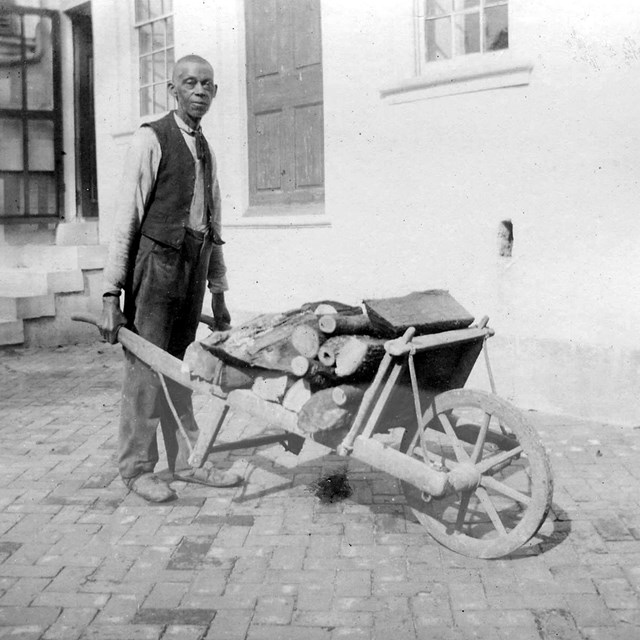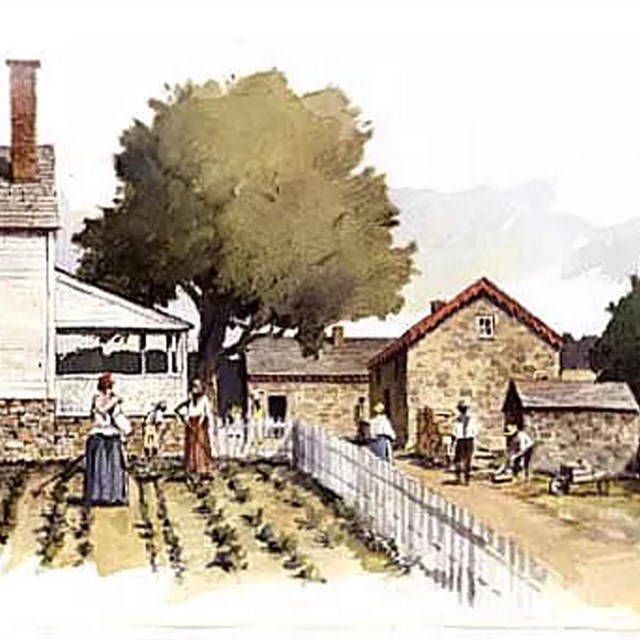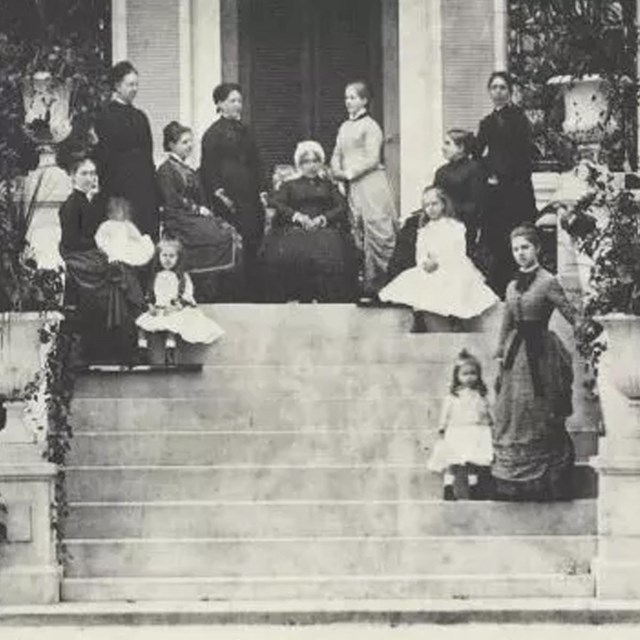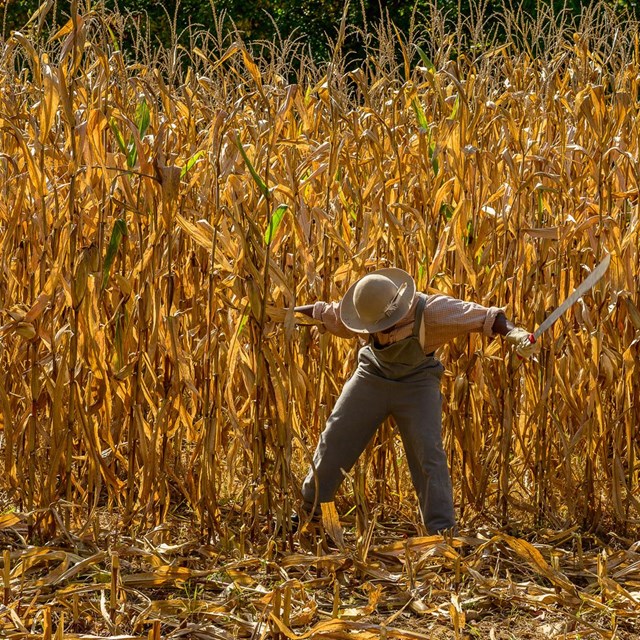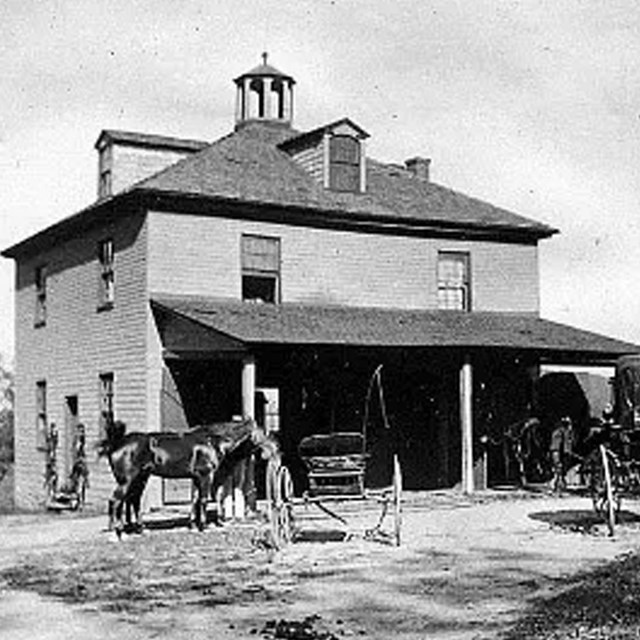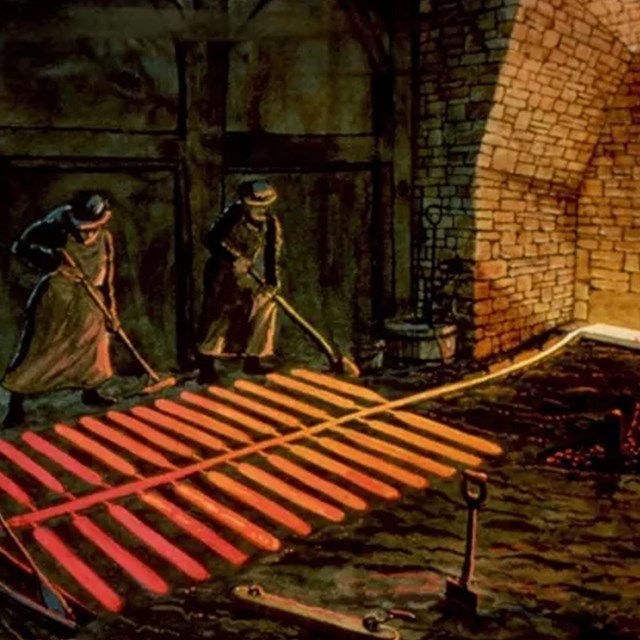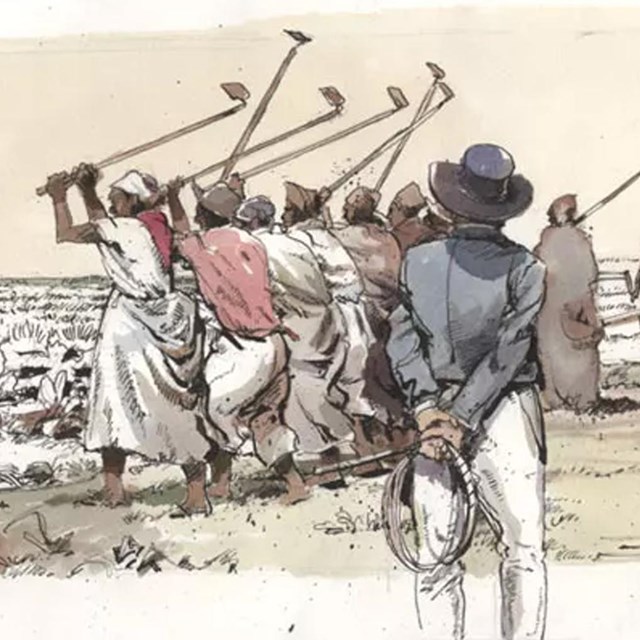
NPS Jim Pratt cared about his family and worked hard for himself and for them. In 1863 he attempted to seek his freedom alongside a large group of other enslaved people from Hampton. Jim Pratt was born in 1834 and was enslaved at birth. His mother was Charlotte (d. c. 1855?), an enslaved person who was a house servant. His father was likely Henry Pratt, a person purchased in 1831 to be enslaved as a farm worker, and who continued to appear in Hampton records up until c. 1863. Jim was the youngest of four siblings (John, Joe, Caroline, and Jim). Jim was apart of one of the large groups who attempted seeking freedom in 1863. The people in the group included Jim Pratt, Head waiter Mark Posey, Louisa Humphreys Posy and their infant child; Mary Humphreys, John Humphreys, George Humphreys, and Jim Gully. They were all captured and held in the Baltimore City jail. John Ridgely's Memorandum Book lists a record of payment in May 1863 to retrieve them from the Baltimore City jail. In May 1864 he is again listed at Hampton in the final clothing list. Account books document Jim Pratt continuing on the plantation (along with his brother Joe) as a paid laborer for many years after Emancipation. Harvesting and shucking corn were among his tasks. He and his wife Laura and three of their children (James, George, Lizzie) are recorded in the 1880 census in Towson. Records indicate that they were married in 1856, before Emancipation. Jim is still listed as working as a day laborer twenty years later, when he was in his late 60s. He and Laura were then living near Hampton. In 1878, the following notice appeared in the Baltimore Sun:
Jim is one of only two formerly enslaved people that were farm workers that James McHenry Howard mentions in his memoirs:
The well-known photo (c. 1897) of an older male servant pushing a wheel barrow outside the East Hyphen is very likely Jim Pratt. Learn More
|
Last updated: May 19, 2025

